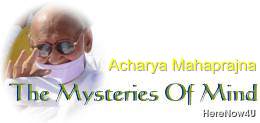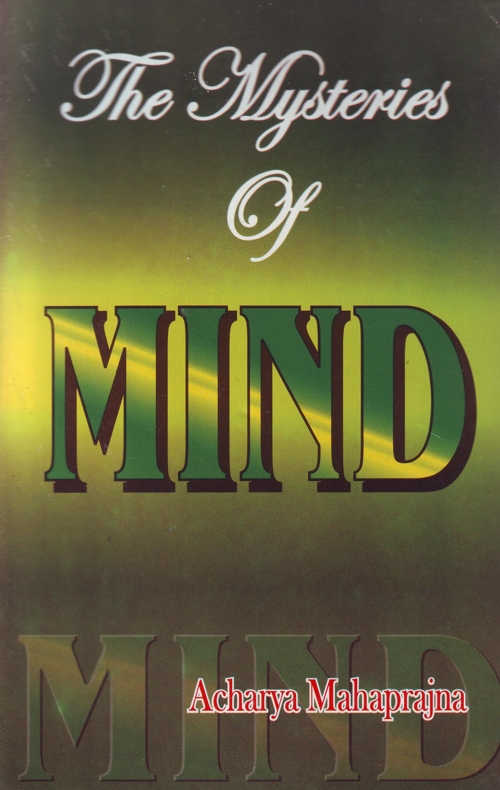
There is no harm in remembering the past and anticipating the future when it is necessary in order to make plans for the future, otherwise we would not be able to live a profitable life. But we should not do so when it is not necessary because it will produce tensions.
The process of time is a dialectical process. The present will resist an encroachment on it by the past or by the future. It wants to push both out of its domain. The present wants to preserve its identity. Why should we try to disturb the process of time when we do not like others to disturb us? We should not mix up the present, past and future.
To live in the present means to give rest to the mind. Breathing is an event which happens at the present moment and not in the past or in the future. We perceive it only when it is taking place and it takes place only in the present moment. We should also practise living and being in the present moment. When we are in the present and are watching what is happening at the present moment, attachments and aversions are totally absent from our minds. Where there is no imagination, there is neither attachment nor aversion. Where there is no memory, there are no attachments and aversions. The present moment is the moment of pure consciousness. Here there is neither love nor hatred. We neither regret past experiences nor are we worried by the future. Our life consists of a single moment only and that moment is the present moment.
Breath perception means to live a life of equanimity or serenity. It means to live in a moment free from passions. It automatically reduces tensions. Body perception does not mean perceiving only the outer form of the body. It also means perceiving the constituents of the body and their formations. Above all the practitioner has to perceive what is happening in the body at the moment when it is being perceived. He has to perceive the pleasant and unpleasant feelings rising and falling within him. He is also to perceive the feelings of joy and sorrow. He is also to perceive the chemical changes happening in the body. He is to perceive what is happening in the outer body. He will also perceive if there is an itch in the skin, which he will like to scratch because the itch is an event. He will also perceive perspiration, which is also an event. He would also perceive the feeling of heat and cold, which happens at the present moment. Whatever happens in the body as an event in the present moment is to be perceived with a dispassionate mind and without indulging in it or without feeling it to be repugnant. He is to see the present moment in order to take advantage of it in sadhana.
Body perception develops the sense of equanimity. It enables us to live in the present moment without attachment and aversions. This exercise will relieve us of tensions.
There are three kinds of tensions:
- physical tensions,
- mental tensions
and - tensions born of imagination or mood.
Every human being remains exposed to these tensions. The practice of kayotsarga is very useful, in warding off physical tensions. The relief you get by a two hours' sleep can be got by half an hour's exercise in kayotsarga.
Mental patients are administered electrical shocks to make them go to sleep. A twenty-five minutes sleep brought about by electrical shock is equal to a six hours' natural sleep. Half an hour's exercise in kayotsarga is capable of giving that much of rest which a two/three hours' sleep can give. It makes the practitioner feel a lightness which natural sleep cannot give.
Meditation is a very good remedy for mental tensions. Let us meditate on a single subject. During the meditation we will live in the present moment. The tension will automatically subside. The meditator will begin to feel that he is growing lighter.
Too much thinking produces mental tension. Thinking is also a disease. There are people who remain absorbed in thoughts for nothing. They feel that thinking.is the summum bonum of life. If you do something for a specific purpose, it is commendable. But purposeless thinking is not good. It makes the mind heavy. We can get control over such a situation by meditation. We should think only as much as is necessary. We should stop it as soon as it becomes unnecessary.
Once we were camping in Ujjain during the four months of the rainy season. We had drawn up the plan of compiling and editing the Jaina agamas (original scriptures). I realized that it was a tremendous task. It required a lot of time and labour, and, therefore, we had to draw up a timetable. We were busy in other matters also. I thought of a way out. I divided the working day into three parts. One part was to be devoted to self-study, another to research work and the third to personal sadhana. I decided to devote three hours every day to the compiling and editing of the scriptures. I also decided that as soon as the time fixed for a particular work was over, it should be immediately stopped and forgotten so that the next engagement could be taken up without any hangover. When the whole day's work was done, it should be taken to have been finished and I was not to worry about what was to be done the next day. This timetable enabled me to work on without, in any way, feeling tired although a lot of energy had to be put in the work.
Freedom from memory enables one to collect energy, and to reduce its expenditure. A switchover to the next work thus becomes rest. Thus I saved a lot of energy. Moreover, as soon as the time allotted to a particular task was over I believed that whatever I had to do had been done. If I remained worried by what was to be done, it will produce mental tension. There will be no end to these worries and my mind will continue to be tense.
Nobody is able to finish his life's work by the time he dies. Ravana, the demon king of Lanka, remarked at the time of his death that his wishes had remained unfulfilled and that he could not do what he had wanted to do. This is the fate of every one. Those who do not live a life of the spirit do feel frustrated at the time of their death. Why should we worry? Will worrying be of any use to us? Unfinished work remains unfinished; you cannot help it.
Those who live a life of the spirit choose to die in a state of samadhi (self-absorption). They die with perfect satisfaction. They feel that they are leaving nothing unfinished at the time of their death. They feel that their life had been a happy journey. On the other hand those who do not live a life of the spirit always suffer from all kinds of tensions. They die a miserable death. They carry a bundle of miseries on their shoulders throughout their lives. They create troubles for their survivors also. How far is it reasonable to carry a bundle of anxieties on our shoulders and make our hearts heavy? Sadhana is a means of changing this kind of life. We can, through meditation, feel that life lived in the present moment is an ideal life.
The third kind of tension is emotional tension. It is a problematic tension. It is also caused by arta and raudra meditations. We have already discussed the theory behind these two meditations earlier. Let us understand it practically.
Arta dhyana means to try to achieve that which has not been achieved and to remain absorbed in achieving it. The attempt to achieve that which is pleasant and to avoid that, which is unpleasant, produces emotional tension. The man who does so is always worried and he will never be able to get rid of his worry. If he becomes estranged from that which is pleasant, he will again and again try to achieve it. He will always be worried lest that which is unpleasant should happen, again. He will always be worried lest that which is pleasant should be lost. This produces anxiety neurosis.
The fact is that we cannot always retain that which is pleasant and avoid that which is unpleasant. We pass through both kinds of experiences. They are characteristics of human life. Getting together and estrangement are chance events and nobody can remain unaffected by them. Anxiety neurosis never allows us to experience even a single moment's relief.
Raudra dhyana also produces emotional tension. It creates mental a complications and produces aggressive tendencies. It makes us revengeful. Traders in the past were not so worried as they are today. The mind of the modern businessman remains worried all the twenty-four hours. He is always worried by the anxiety to hide his malpractices. One who tells lies can never get rid of lies. This is the position of raudra dhyana. It is a terrible position. The emotional tension generated by raudra dhyana happens in four situations, which involve aggression, lies, theft and acquisitiveness.
Physical tension is a problem of the modern world. Mental tension is a still more acute problem. The most acute problem is emotional tension. These three tensions produce terrible consequences. Dharmya dhyana is the method of getting rid of this situ ation. The practice of this meditation relieves one of the undesirable effects of arta and raudra dhyanas and the emotional tensions they produce. Dharma dhyana and sukla dhyana are the means of retaining mental balance and of keeping the practitioner within the limits of his own being.
We perform colour meditation on tejo-lesya, padma-lesya and sukla lesya. Meditation on tejo-lesya enlightens us and gives joy.
Meditation on padma-lesya purifies the heart.
Meditation on sukla- lesya removes passions and gives peace.
 Acharya Mahaprajna
Acharya Mahaprajna

